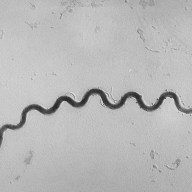The one surviving inmate from the daring upstate New York prison escape has told investigators he was the brains behind the break and that he slipped out of his cell nigthly to case the innards of the Clinton Correctional facility. The Times broke the dramatic story, revealing disturbing details of how the scheming and plotting went unnoticed.
The Times reports:
Sweat, a convicted killer, revealed the details to state investigators from his hospital bed, where he is recovering from two gunshot wounds sustained during his capture, the Times says. The report says this of Sweat:
His explorations began this past winter and continued through the spring. They took him underground almost every night for hours until he finally stumbled on what would become, through trial and error and countless hours of grueling work, his subterranean route out.Mr. Sweat felt free during his nightly journeys into the maze, as though he had already escaped the ugliness of his day-to-day prison life. Authorities allege Sweat and Matt had help getting the tools for their escape from prison employeeJoyce Mitchell, who had been charged with smuggling hacksaw blades to the pair in frozen hamburger meat. The Times said thre prison break is “a story of neglect by those who were supposed to keep Mr. Sweat behind bars; of rules and procedures ignored; and of a culture of complacency among some prison guards, employees and their supervisors, whose laziness and apparent inaction — and, in at least one instance, complicity — made the escape possible.”
Prison break ‘mastermind’ David Sweat reveals how he did it: Times report

Reuters, NY State Police


















